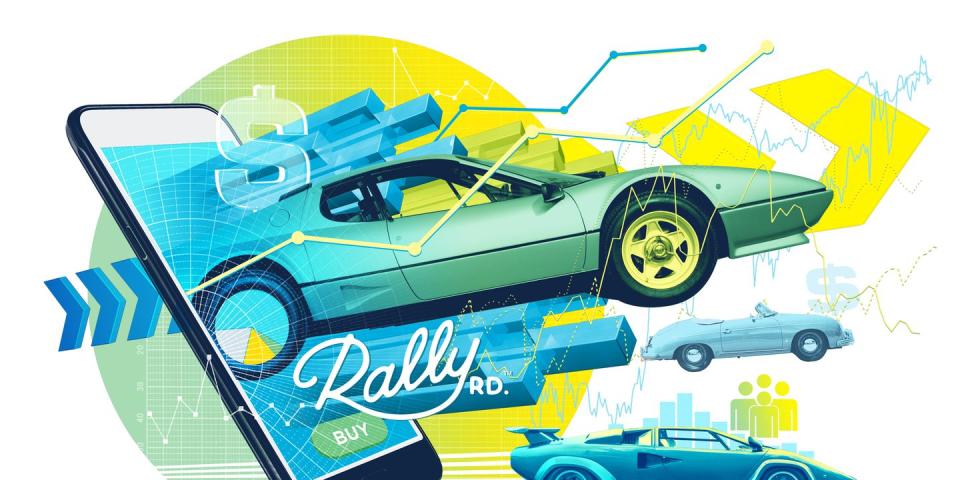This Smartphone App Lets Enthusiasts Buy and Sell Shares in Classic Cars

Remember the days when you could scoop up a used Ferrari 330GT 2+2 for 30 grand? Neither do we. Today, even a low-end vintage Ferrari sells for hundreds of thousands. And the truly collectible cars-Ferrari 250GTs, prewar Alfas, Aston DB4 GT Zagatos-fetch millions. The average Joe, it seems, has no hope of getting into the higher levels of the game.
That's where Chris Bruno, one of the founders of Rally Rd., disagrees. Rally Rd. is a platform that gives aficionados who can't afford high-end cars the chance to own a stake in one. The business is regulated by the U.S. Securities and Exchange Commission, and FINRA-registered brokers oversee all transactions and vet the vehicles Rally Rd. purchases.
Here's how it works: The Rally Rd. team acquires a blue-chip (or not-so-blue-chip) classic car, securitizes it, and opens an initial offering of shares. The price per share has ranged from $8 to $200. Funding a car can take less than 10 minutes or up to three months, and Rally Rd. assumes the responsibility of storing and maintaining each car in its portfolio. After the initial offering, shares cannot be bought or sold for 90 days, after which users can buy or sell shares within the app through a registered broker. So far, Rally Rd. has conducted follow-up trading windows on three cars, each of which saw gains of 3 to 5 percent over the course of four to six months. At press time, Rally Rd. had sold all the shares in its initial offerings of a 1985 Ferrari Testarossa and an '83 Ferrari 512 BBi. Other cars in the lineup include a $425,000 '55 Porsche 356 Speedster and a $16,500 1990 Ford Mustang 7Up Edition.
As with pork bellies and frozen concentrated orange juice, a car's value fluctuates over time. Bruno sees Rally Rd. as a way to diversify within a hobby whose assets often swing in and out of favor. "Most people can afford one collectible car-a Ferrari, for example. Then if the Ferrari market goes bad, they're screwed. This way, you can be spread across different genres." Rally Rd. leans on its network of dealers, auction houses, and private brokers to decide when the time is ripe for any given car to be sold. After the sale, the liquidated funds are distributed among the shareholders.
Brian Rabold, Hagerty's VP of valuation services, says that it takes an incredible amount of research to determine which cars-based on provenance and condition-are good investments. "Ultimately, there are probably better places to invest your money than buying shares of collector cars, but this could be a fun way to participate in something that might otherwise be prohibitively expensive."
It almost goes without saying that shareholders aren't allowed to drive the cars, so Rabold's idea of fun might differ from yours. Rally Rd. is working to set up a showroom in New York where investors can visit the cars they partially own. Video livestreams have also been discussed. Bruno and his team are all car guys, but they have cars they drive and cars they preserve. Investment cars, he says, are for looking, not for touching. That's fine for the Wall Street set, but if we had a Ferrari Testarossa, we'd be driving it.
From the November 2018 issue
('You Might Also Like',)

 Yahoo Autos
Yahoo Autos 